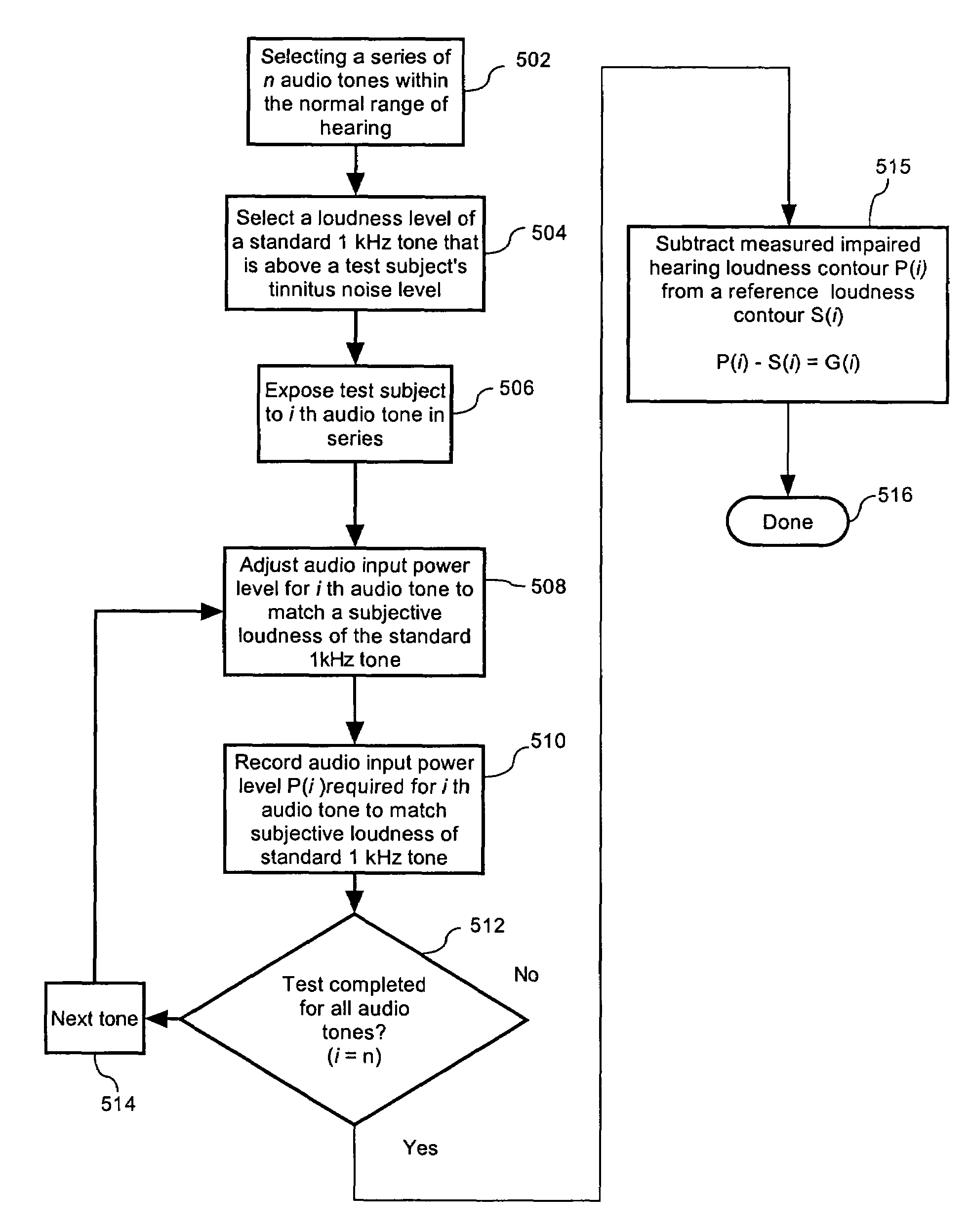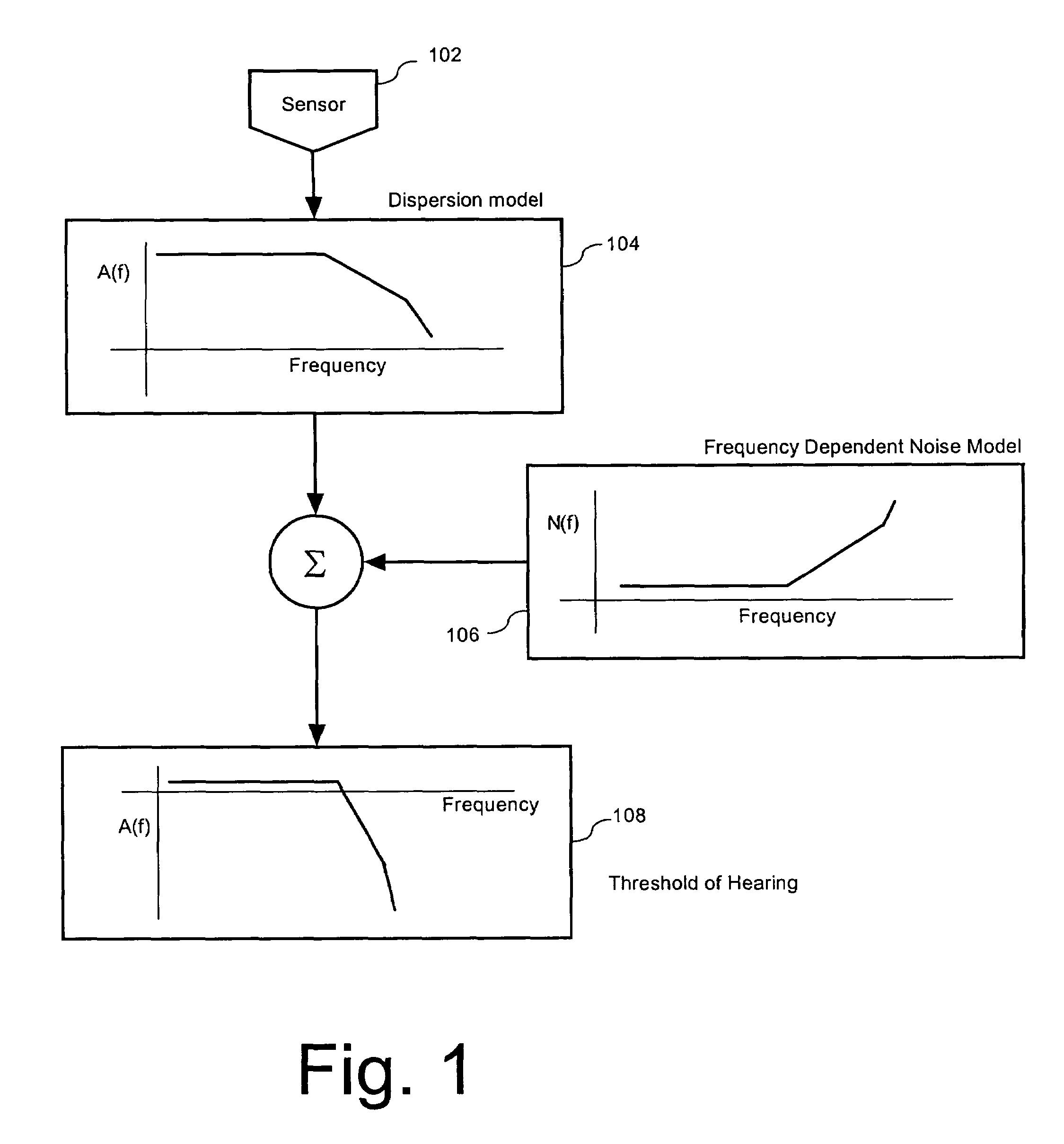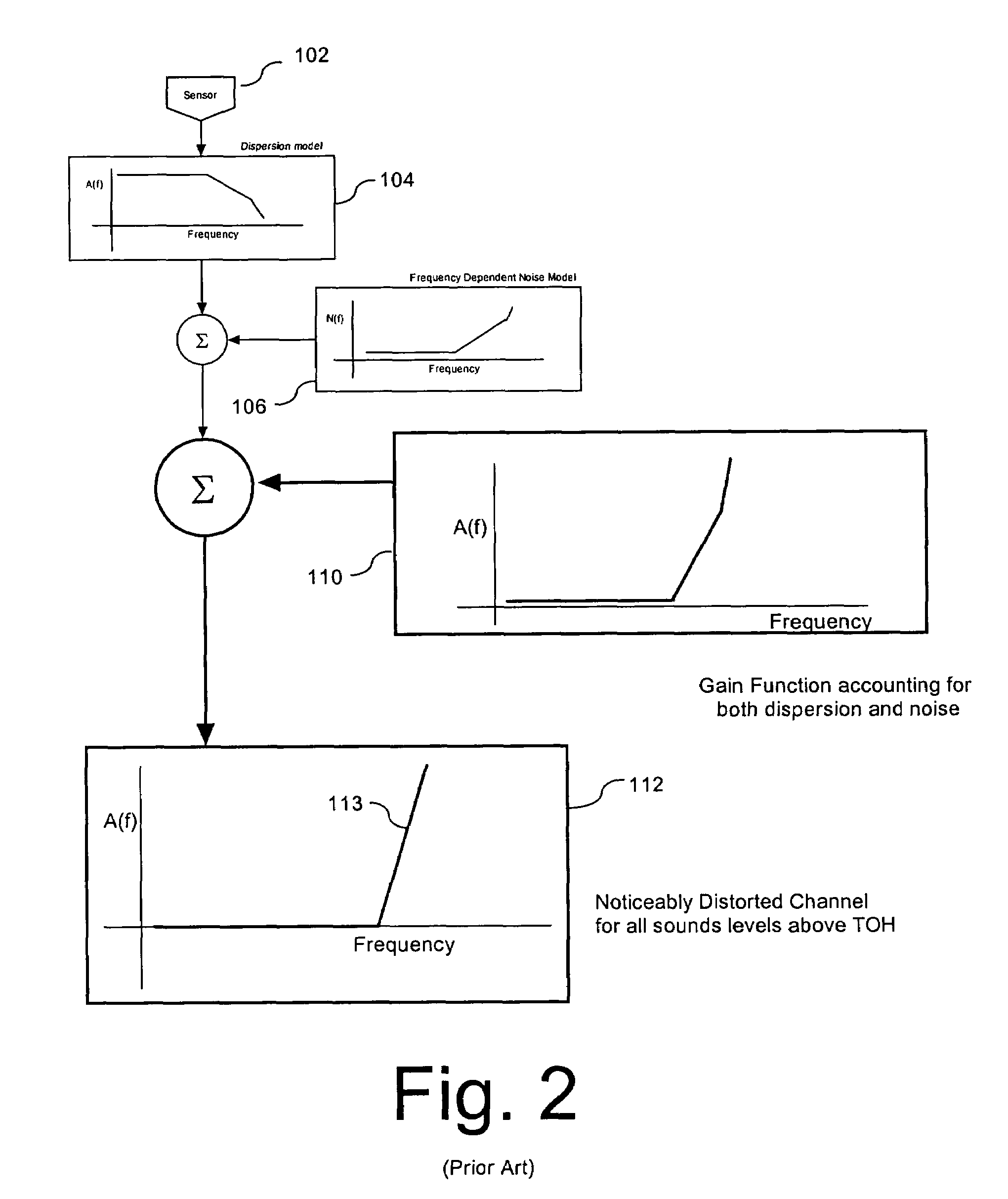High fidelity hearing restoration
a high-fidelity, hearing restoration technology, applied in the field of hearing aids, can solve the problems of affecting the accuracy of hearing loss measurement, difficulty in allowing hearing impaired individuals to understand words spoken, and difficulty in allowing hearing impaired individuals to understand words, etc., to achieve accurate hearing loss measurement
- Summary
- Abstract
- Description
- Claims
- Application Information
AI Technical Summary
Benefits of technology
Problems solved by technology
Method used
Image
Examples
Embodiment Construction
[0024]In order to understand the problem with conventional hearing restoration techniques, it is useful to consider the human ear as a simple communication channel. Referring to FIG. 1, the hearing channel can be conceptually modeled as including audio sensor 102 with an undistorted frequency response within the audio frequency band. As shown in FIG. 1, the output of the sensor 102 can be modified in accordance with a transfer function of a dispersion model 104. As used herein, dispersion refers to hearing losses that reflect a true loss of hearing sensitivity as opposed to losses attributable to the effects of tinnitus noise in the channel. The dispersion model 104 is a simple linear representation of the hearing attenuation that commonly occurs for many persons, especially older persons, suffering from hearing loss. It may be noted that the dispersion model 104 rolls off somewhat at higher frequencies, reflecting greater attenuation (and lessened ability to hear) received audio at...
PUM
 Login to View More
Login to View More Abstract
Description
Claims
Application Information
 Login to View More
Login to View More - R&D
- Intellectual Property
- Life Sciences
- Materials
- Tech Scout
- Unparalleled Data Quality
- Higher Quality Content
- 60% Fewer Hallucinations
Browse by: Latest US Patents, China's latest patents, Technical Efficacy Thesaurus, Application Domain, Technology Topic, Popular Technical Reports.
© 2025 PatSnap. All rights reserved.Legal|Privacy policy|Modern Slavery Act Transparency Statement|Sitemap|About US| Contact US: help@patsnap.com



